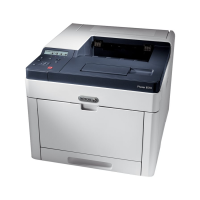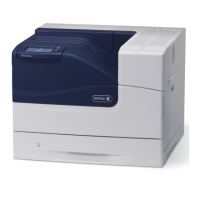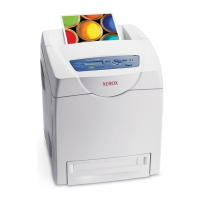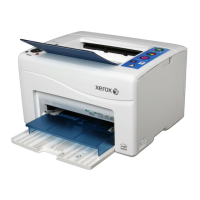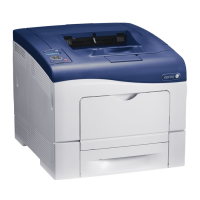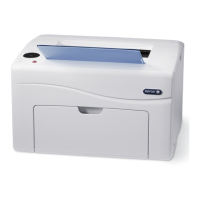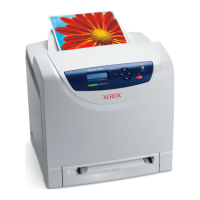4-10 Phaser 6300/6350 Color Laser Printer Service Manual
When executed from the Service Diagnostics General Status menu, the Diagnostic
Fault History displays on the Control Panel and updates as each error event is
detected. Fault History events are recorded only when no pre-existing errors are
present. The second and subsequent occurrences of the same event are not recorded.
The maximum number of events recorded is 25. Once the list is full, additional new
events are lost until the log is cleared by either a printer reboot or by selecting Fault
History Master Clear from the Fault History menu. New events occurring after the list
is cleared are recorded.
For display, the list combines a line number, a code, and potentially a test
precondition indicated by the letter P (for events requiring a power cycle), a U for
unknown event sequence, an M for more entries, or a string of asterisks ***** to
indicate the last error recorded.
As an example:
<Fault History Display>
1 [150]
2 [42]P
3 [198]P
4 [T2]M
Press CANCEL to exit
The example shows a single screen displaying four events. Lines 2 and 3 include the
precondition indicator P directing a reboot before component testing continues.
Line
4 includes an abbreviated Misfeed at Tray 2 code, and the continuation notation
M indicating more events appear on subsequent pages. Pressing OK calls up the next
page. Pressing Cancel exits the utility and displays the Fault History menu.
Note
Jam codes are abbreviated for display. The word “Jam” is removed from the code
leaving only the location designator (F, D, RR, T1~5).
Events typically appear in the order detected. However, occasionally the event’s
sequence is indeterminate. As is the case with simultaneous events. In these cases, a U
is appended to the event to indicate an unknown sequence. While event sequence can
be important in determining cause, the event itself provides a starting point for
investigation.
For those events listed with a P, testing of a specific component may not require the
indicated power cycle. For example, if the log lists a motor failure, it’s reasonable to
go directly to the appropriate motor test to confirm the failure without first power
cycling the printer. For events involving components, such as the Fuser, Transfer
Roller, or Toner Cartridges, power cycling is recommended before additional testing
is performed.
